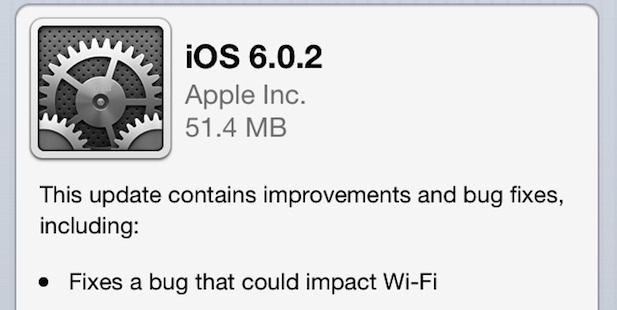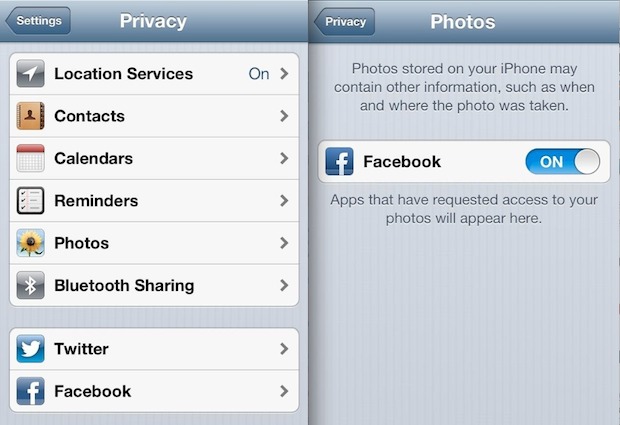
Apple has released iOS 6.0.2, a minor version release with a major fix aimed at iPhone 5 and iPad Mini users who have experienced problematic wi-fi connections with the devices. The changelog for the 6.0.2 update says the update includes improvements and bug fixes, but only lists "Fixes a bug that could impact Wi-Fi" in the list of adjustments.
The iOS 6.0.2 update is available now and can be downloaded from iTunes by connecting the iOS device to a computer, updated with Over-the-Air from the device itself, or by directly grabbing firmware files that are hosted by Apple and updating manually with IPSW. Attempting the OTA update may provoke a temporary error as the release propagates throughout Apple's content delivery servers, if you encounter such an error try again in another few minutes. The OTA update is by far the quickest method and the smallest download, taking less than a minute to install.
iOS 6.0.2 Direct Download Links
These are direct download links of IPSW files hosted with Apple, right-click and choose "Save As".
We've discussed various connectivity and wi-fi issues pertaining to iPhone 5 on separate occasions, and previously offered a workaround that involved setting manual DNS entries which provided some relief for the sporadic wireless speed issue. Making troubleshooting initially difficult was the observation that wi-fi problems only manifested when a particular iOS device was connected to certain brands or models of wireless routers. The iOS 6.0.2 update is expected to resolve this entirely, regardless of the router or device in use.
As of now, the iOS 6.0.2 update is limited to iPhone 5 and iPad Mini. For other users, iOS 6.1 is currently in beta and expected to be released within the coming weeks.





